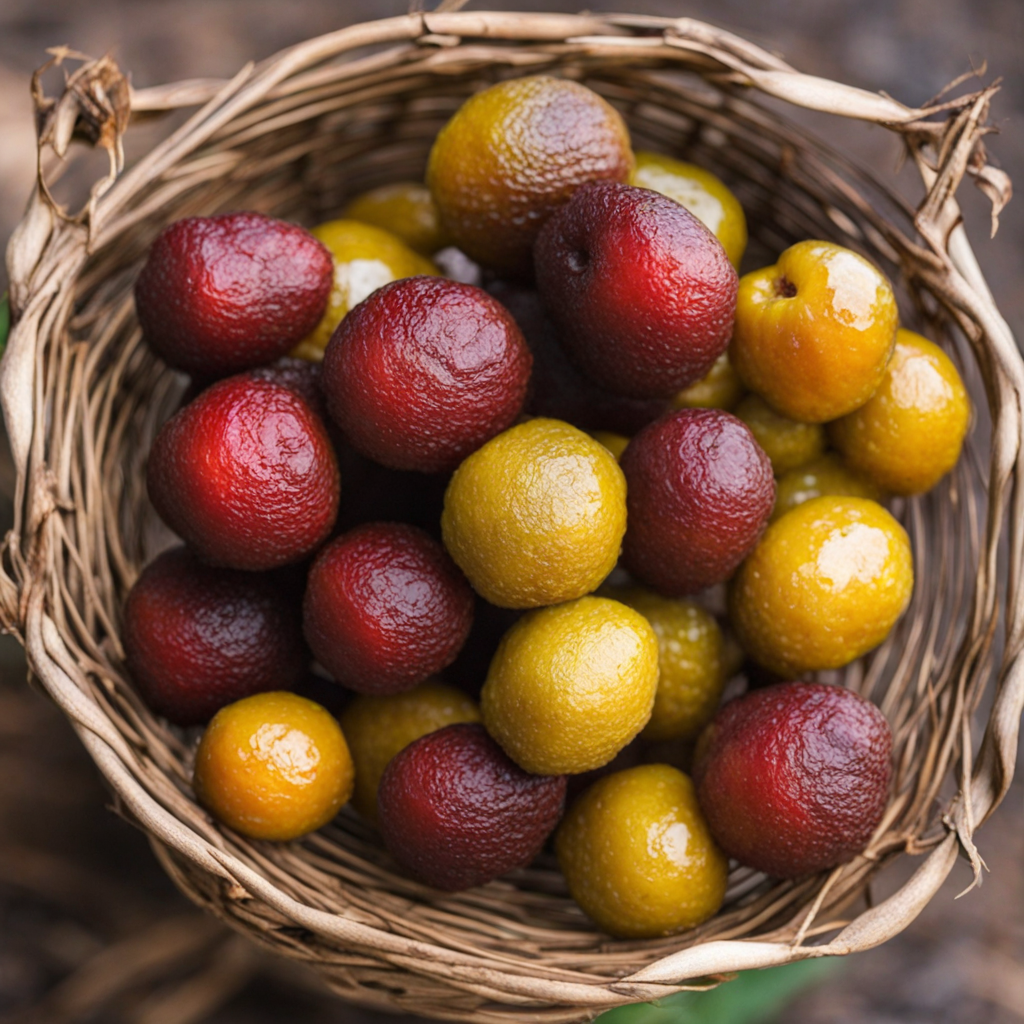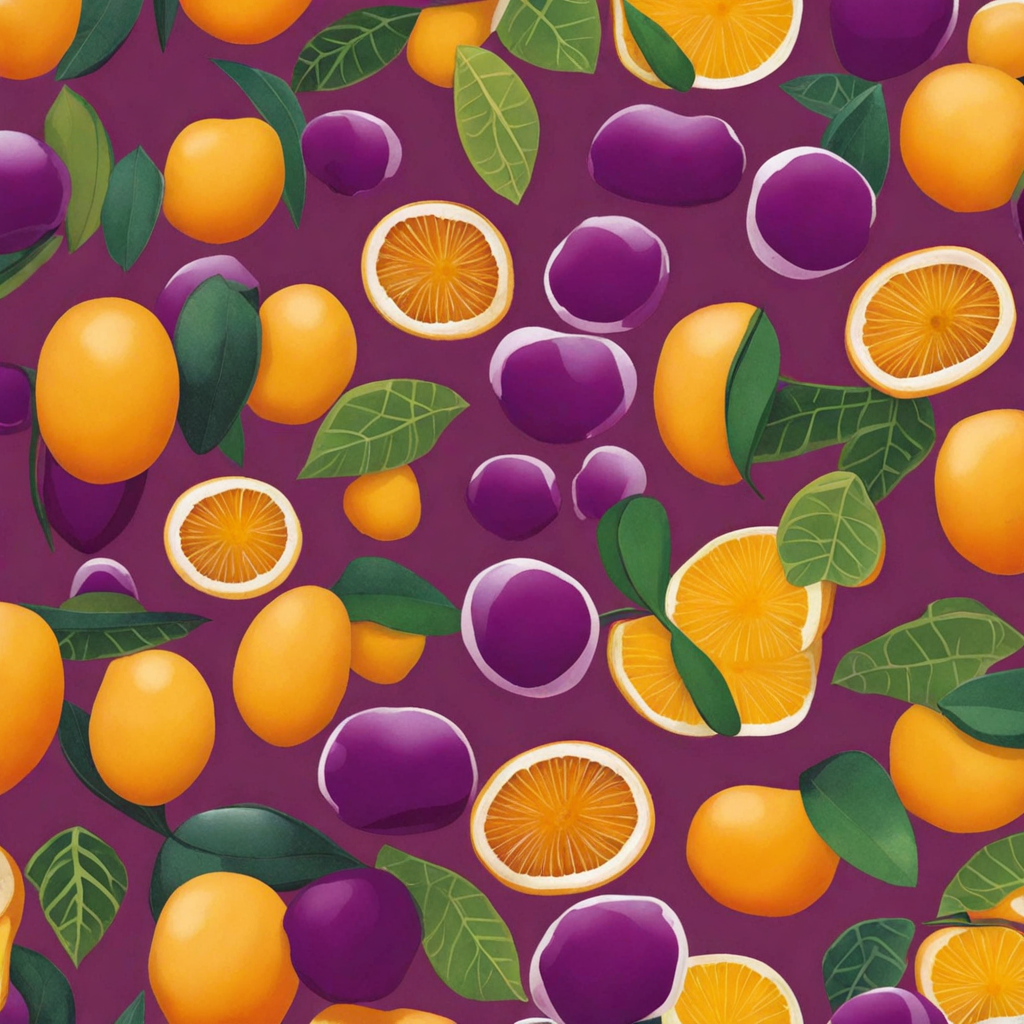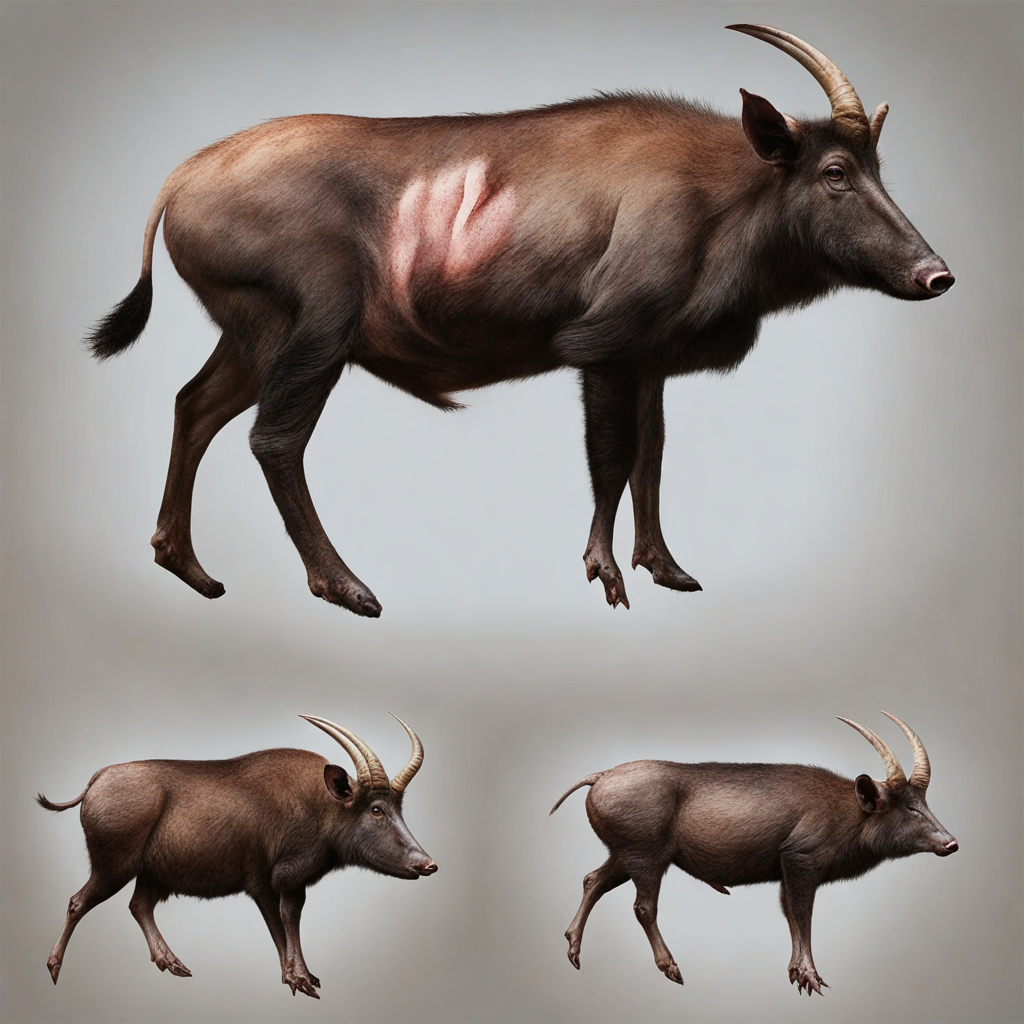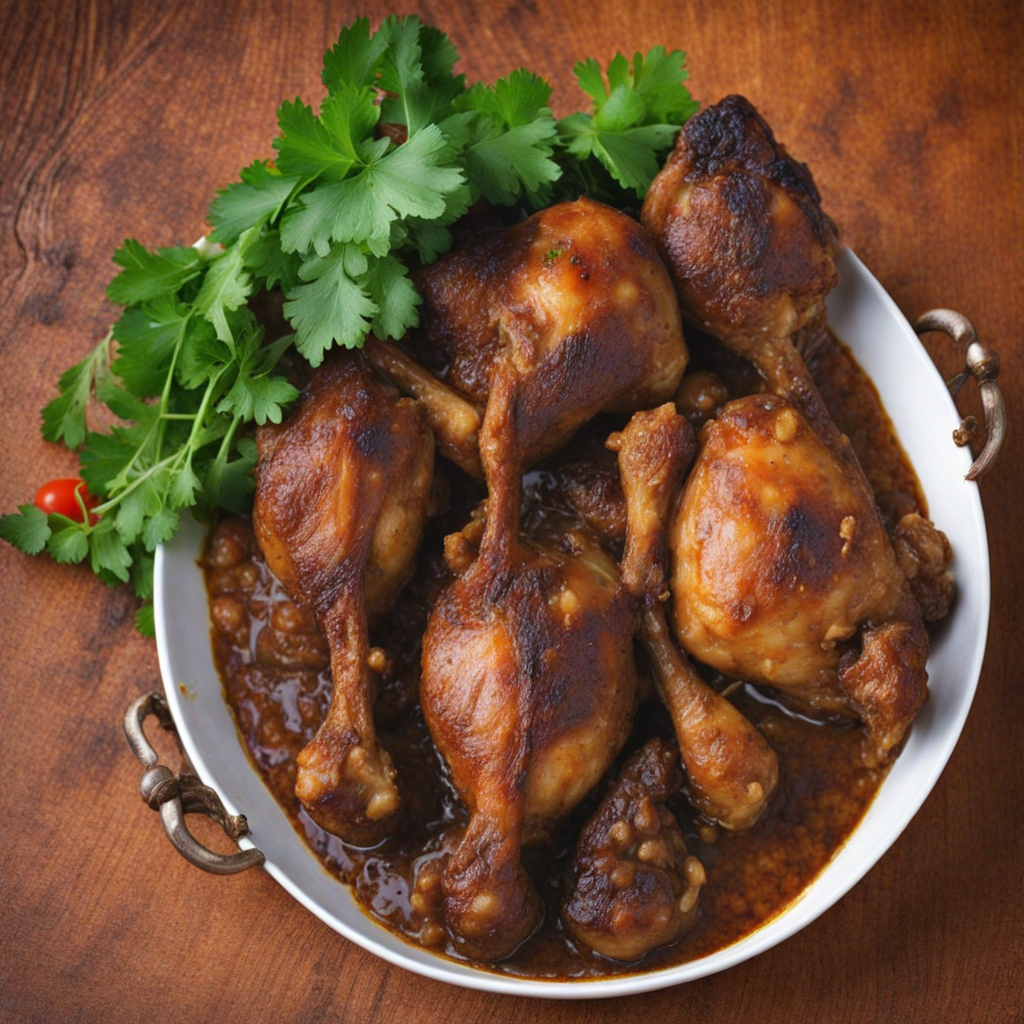Atanga
Atanga is a unique and traditional dish from Gabon, celebrated for its distinctive flavor and cultural significance. This dish is primarily made from the seeds of the African oil palm, which are carefully harvested and processed. The seeds are typically boiled or roasted, resulting in a nutty, earthy flavor that is both rich and satisfying. Atanga can be eaten on its own or used as an ingredient in various dishes, offering versatility and a delightful taste experience that reflects the culinary heritage of Gabon. One of the standout features of Atanga is its texture. When cooked, the seeds develop a creamy consistency that pairs beautifully with a variety of accompaniments. It can be served alongside grilled meats, fish, or even as part of a hearty vegetable stew. The dish often incorporates local spices and seasonings, enhancing its flavor profile and creating a harmonious blend with the other components on the plate. The combination of flavors and textures makes Atanga a beloved staple in Gabonese cuisine. Beyond its delicious taste, Atanga holds cultural importance for the people of Gabon. It is often enjoyed during communal gatherings and celebrations, symbolizing unity and the sharing of resources. The preparation of Atanga can be a communal activity, bringing families and friends together in the kitchen. For those looking to explore new culinary horizons, Atanga offers a taste of Gabon’s rich food culture, providing an opportunity to savor a dish that is both nourishing and steeped in tradition.
How It Became This Dish
Atanga: A Culinary Treasure of Gabon Atanga, a cherished delicacy from Gabon, is not just a food; it embodies the rich cultural tapestry of the Gabonese people. This unique dish, often referred to as "the fruit of the forest," has roots that intertwine with the very identity of the communities that have consumed it for generations. As we delve into the history of Atanga, we uncover its origins, cultural significance, and evolution over time, painting a vivid picture of its place in Gabonese society. Origins of Atanga Atanga (scientific name: *Dacryodes edulis*), also known as African pear or safou, is a fruit native to the tropical forests of Central and West Africa. It thrives in humid climates, where it flourishes under the canopy of tall trees. The fruit itself is small, oval-shaped, and can vary in color from green to dark purple when ripe. Its creamy, buttery texture and unique flavor make it a favorite among locals. The history of Atanga dates back centuries. Indigenous tribes, such as the Fang and the Punu, have cultivated and consumed this fruit for generations, relying on it for sustenance and as a valuable source of nutrients. The tree's resilience and ability to grow in the dense rainforest made it a reliable food source, especially in regions where agriculture was challenging due to the geography. Cultural Significance Atanga is deeply ingrained in Gabonese culture, viewed not only as a food staple but also as a symbol of community and tradition. For many Gabonese people, the harvesting of Atanga represents a communal activity, bringing families and neighbors together. The harvesting season, which typically occurs during the rainy months, is a time of social gathering, as people venture into the forests to collect the ripe fruit. Traditionally, Atanga is prepared in various ways. It can be boiled, roasted, or grilled, often served with sauces made from groundnut or palm oil. The versatility of Atanga allows it to complement a wide range of dishes, making it a staple in both everyday meals and special occasions. It is not uncommon for Atanga to be featured in celebrations, feasts, and ceremonial gatherings, showcasing its importance in the social fabric of Gabon. In addition to its culinary uses, Atanga also holds medicinal properties. Indigenous knowledge has long recognized the fruit's nutritional benefits, as it is rich in vitamins A, C, and E, essential fatty acids, and antioxidants. It is often used in traditional medicine to treat various ailments, including digestive issues and skin conditions. This holistic approach to food underscores the deep connection between health, nutrition, and culture in Gabonese society. Development Over Time As Gabon navigated the complexities of colonialism and modernization in the 19th and 20th centuries, the role of Atanga began to evolve. The introduction of cash crops and the pressure of globalization prompted some traditional practices to wane, yet Atanga remained resilient. The fruit's adaptability allowed it to retain its significance among local populations while also finding its way into urban markets. In recent decades, there has been a resurgence of interest in traditional food practices in Gabon, driven by a younger generation seeking to reconnect with their cultural heritage. This movement has sparked renewed appreciation for Atanga, with local chefs and food enthusiasts experimenting with innovative recipes that honor its traditional roots while incorporating modern culinary techniques. For instance, Atanga is now being featured in gourmet dishes, showcasing its potential beyond the customary preparations. Furthermore, the rise of eco-tourism and a global appetite for exotic foods have led to increased visibility for Atanga on the international stage. As Gabon promotes its unique biodiversity and culinary heritage, Atanga has emerged as a symbol of the country's rich natural resources. This has opened up opportunities for local farmers and producers to market Atanga both locally and internationally, contributing to economic development while preserving traditional practices. Challenges and Future Prospects Despite its cultural and economic significance, Atanga faces challenges in the modern world. Deforestation and climate change pose threats to the natural habitats where Atanga thrives. The loss of biodiversity can jeopardize the sustainability of this cherished fruit, along with the livelihoods of those who depend on it. Conservation efforts are critical to ensuring that Atanga continues to flourish in its native environment. Moreover, as Gabon continues to modernize, there is a risk that traditional food practices could be overshadowed by fast food and global culinary trends. It is essential for communities to strike a balance between embracing modernity and maintaining their culinary heritage. Education and awareness initiatives can help promote the significance of Atanga and other traditional foods, fostering pride in Gabonese culture and encouraging sustainable practices. Conclusion Atanga is more than just a fruit; it is a testament to the resilience and richness of Gabonese culture. From its origins in the lush rainforests of Central Africa to its current status as a beloved delicacy, Atanga reflects the deep connection between food, identity, and community. As Gabon navigates the challenges of the modern world, preserving the traditions surrounding Atanga will be vital in ensuring that this culinary treasure continues to thrive for generations to come. By celebrating and promoting Atanga, Gabon not only honors its heritage but also showcases the beauty and diversity of its natural resources to the world.
You may like
Discover local flavors from Gabon







